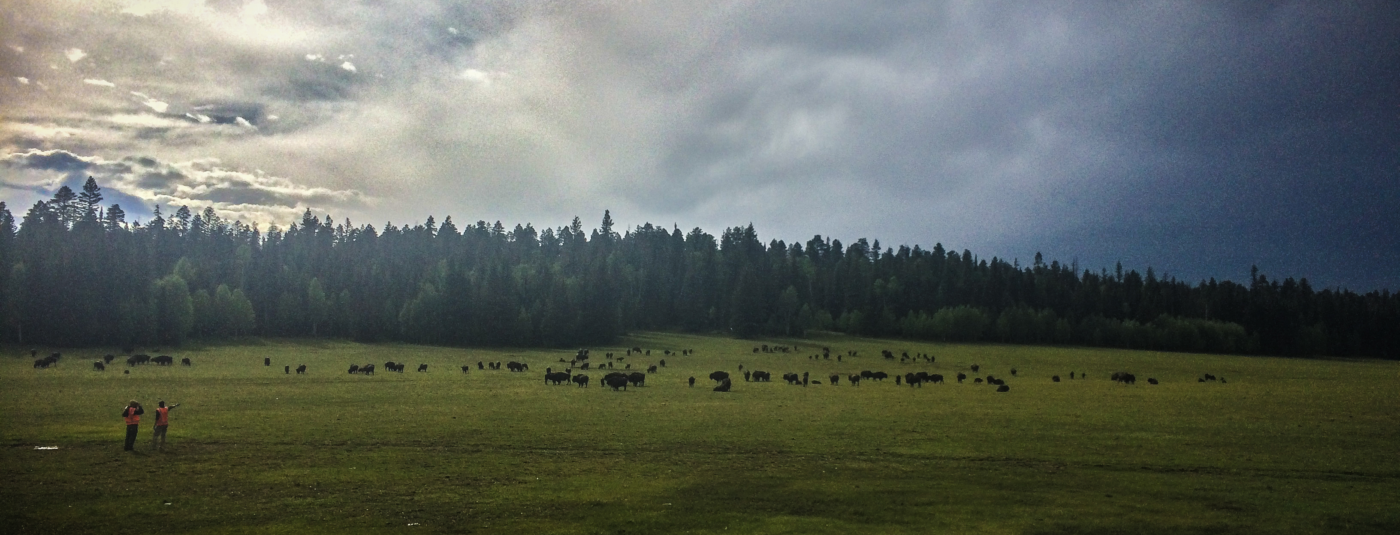Uncategorized
Bison in Grand Canyon, the Kaibab Plateau Herd – National Park Service (.gov)
Article
NPS Photo/ S.Ciarrachi
Kaibab Plateau Bison Herd: Historical Context
The present-day Kaibab Plateau Bison Herd originated from the Charles Jesse “Buffalo” Jones founder herd brought to Arizona in 1906. Arizona Game & Fish Department managed the herd starting in 1929 at approximately 100 bison, in the House Rock Wildlife Area within the Kaibab National Forest. In the 1990s, due to public hunting pressure, drought, reduced forage and fire, about 100 bison migrated to Grand Canyon National Park’s North Rim. Since 2010, the herd has primarily resided on the North Rim within Grand Canyon National Park. Outside of the Park, Arizona manages public hunts on the Kaibab National Forest. The Kaibab Plateau Bison Herd is physically separate from other Arizona wild bison herds (the House Rock Bison Herd and the Raymond Ranch Herd). It is currently co-managed by Grand Canyon National Park, Arizona Game & Fish Department, and the Kaibab National Forest and is designated as wildlife under Arizona state law and federal policy.
Salganek S; Terwilliger M; Schoenecker, K.A. 2022. Kaibab Plateau Bison Herd Seasonal Ranges. GeoDatabase in National Park Service Integrated Resource Management Applications Datastore 2293856. Grand Canyon National Park, Kaibab Plateau, Arizona, USA.
Terwilliger ML, Hartway CR, Schoenecker KA, Holm G, Zeigenfuss LC, Swan M, Salganek D, Buttke D, Musto DT. 2020. Management of the Kaibab Plateau bison herd in Grand Canyon National Park: 2018–2019 operations report. Natural Resource Report. NPS/GRCA/NRR
Kaibab Plateau Bison Herd Genetics
Herd founder, Charles “Buffalo” Jones, attempted to hybridize bison with cattle in the 1800’s, as did most other owners of founding herds, which was mostly unsucessful. Genetic microsatellite analyses of the herd from samples collected in 2003 and 2019-2021 confirm this legacy (cattle genes in bison is called intogression). There are two types of DNA tested for: mitochondrial DNA (mtDNA) and nuclear DNA (nDNA). The mtDNA is inherited through the mother only, composes 0.25% of a cell’s genetic makeup, is not affected by evolutionary forces, and is primarily responsible for cell energy production. The nuclear DNA (nDNA) is inherited through both parents, composes 99.75% of a cell’s genetic makeup, is affected by evolutionary forces, and is responsible for heritable traits such as eye and hair color.
In comparison to 20 other wild bison conservation herds, the Kaibab Plateau Bison Herd cattle mtDNA is very high. However, the level of cattle genes in nDNA is ~1.6%, which is on the high end of the same 20 herds, but roughly equivalent to what has been detected in the herd at Custer State Park (1.5%), Badlands National Park (1.3%) and the Theodore Roosevelt National Park North Unit herd (1.4%). This new genetic information, their physical features, and behavior show that the Kaibab Plateau herd are bison (not cattelo or beefalo).
When comparing the Kaibab Plateau Bison Herd with 19 other wild conservation herds, the herd is significantly genetically different, but is most genetically similar to the herds at Wind Cave National Park and Wichita Mountain National Wildlife Refuge (see Figure). This is not surprising as bulls have been introduced from these herds in the past. The Kaibab Plateau Herd has unique bison alleles in the nDNA not found in any other tested herd. Whether these genes are from founding genetics or have evolved since then is unknown. These alleles can be valuable to the conservation of the species. Small but regular introductions from other populations (6 additions over 72 years) appear to have prevented genetic bottlenecking (or inbreeding depression) and genetic drift that would be expected otherwise in a small, isolated herd.
For more in-depth information on genetics see the following reports:
Herd Health & Disease Survelliance
Due to their isolation from other herds, the Kaibab Plateau Bison Herd is relatively disease free. Samples for disease monitoring have been taken from carcasses and all captured bison. The herd has been monitored for a variety of diseases common to bison. To date bison have tested negative for brucellosis, Bovine Viral Diarrhea, Johnes disease, Mycoplasma bovis, parasites, and mineral deficiencies.
NPS Photo/J. H. Thompson
Related information:
Grand Canyon National Park
Last updated: July 18, 2024
Download the NPS app to navigate the parks on the go.

